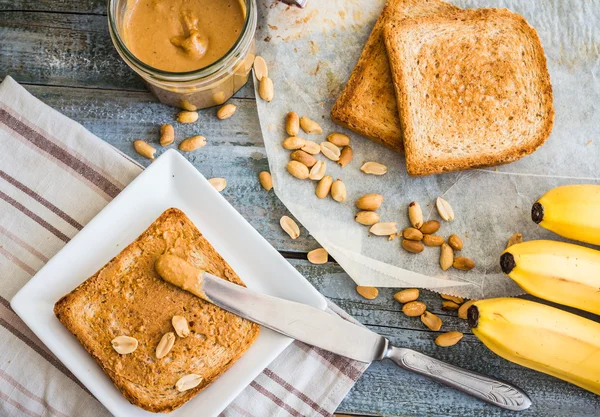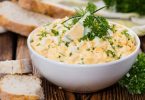Peanut butter is a popular food that is consumed in many parts of the world. It is a food paste or spread that is made from ground, or dry-roased peanuts. Other additional ingredients such as salt, sweeteners, or emulsifiers are used to modify the taste or texture of peanut butter.
Peanut butter is an excellent source of protein, healthy fats, and fiber. It contains many health-promoting vitamins and minerals such as E, B6, magnesium, iron, and selenium.
Peanut butter contains omega-6, a fatty acid which lowers bad (LDL) cholesterol and increases good (HDL) cholesterol. Furthermore, the also a natural source of arginine, an amino acid that prevents heart and vascular disease by promoting blood vessel function.
Research has proved that people who consume peanut butter have a lower risk of developing type 2 diabetes and heart disease.
However, peanut butter is rich in calories. And if eaten unhealthily, it can lead to weight gain. So you should not eat peanut butter anyhow; eat it correctly and healthily.
In this article, you will find out are some healthy ways to eat peanut butter:
9 Healthy Ways to Eat Peanut Butter
Below are some of the ways you can consume peanut butter to make it healthier.
1. Peanut sauce
Make peanut sauce by combining peanut butter, low-sodium soy sauce, lime juice, minced garlic, gingerroot, and brown sugar until smooth. Add water to make a creamy sauce (add more lime juice if you like it tangy).
Also, you can make peanut sauce with spices like ginger, cayenne pepper, and turmeric for dipping vegetables or adding flavor to grains.
2. Toppings on whole-grain bread
Add peanut butter to whole-grain bread and top it with banana slices or strawberries. This will give you an energy boost that lasts throughout the day. Whole grain bread is very healthy, so you don’t have to worry about weight gain that comes from consuming bread.
3. Sandwich spread
Spread peanut butter on whole-grain bread and top it with sliced apples, grapes, or berries for added nutrients and antioxidants. You can also try sliced tomatoes instead of fruit for a change in taste.
4. Oatmeal topping
Adding peanut butter is a great way to spice up your morning meal if you like oatmeal as a breakfast food. Just mix one tablespoon of peanut butter into your prepared oatmeal before eating it in the morning.
5. Homemade trail mix
Blend peanuts, raisins, and cinnamon to make a homemade trail mix that contains protein, fiber, and antioxidant vitamins A and E — all nutrients that help lower cholesterol levels and protect against heart disease.
6. Whole grain bread with sliced banana spread

Spread on whole-grain bread with sliced bananas. This is a good breakfast option because it provides carbohydrates and some protein. Bananas also contain potassium, which helps your muscles contract and relax. This combination of nutrients keeps you feeling full longer than just eating peanut butter alone.
7. Yogurt topping
Add peanut butter to oatmeal or yogurt. Peanut butter adds flavor and another source of protein to this breakfast dish. Yogurt is also a source of calcium, which helps build strong bones and teeth.
8. Pasta or rice additive
Toss with pasta or rice for an easy weeknight meal. Add chopped broccoli or cauliflower florets for extra vitamins and minerals. You can also add broccoli slaw mix instead of broccoli florets if you prefer its texture better.
9. Peanut butter frozen treat
Make a frozen treat by blending cereal and vanilla yogurt with melted chocolate chips, then freeze it in an ice cube tray. You can serve it as a dessert or snack on a sunny day.
How to Keep Your Peanut Calories in Check:
To keep your peanut butter calories in check, use these tips:
- Choose reduced-fat peanut butter over regular. Reduced-fat peanut butter has the same creamy consistency as full-fat varieties but fewer calories per serving. Look for reduced-fat peanut butter that contains at least 15% less fat than regular brands. Some brands offer even more reductions in fat content.
- Spread it thinly instead of spreading it thickly.
- Go for natural or organic peanut butter instead of chemically preserved ones. The latter contains more calories and is less nutritional than the former.
Conclusion
Peanut butter is healthy when consumed correctly. To ensure you benefit from the nutrients of peanut butter, you can follow the tips above on appropriate ways to eat peanut butter. Avoid eating peanut butter in excess, and stay away from synthetic preserved peanut butter.








